Women must be warned of home birth risks and have access to skilled midwives, experts say
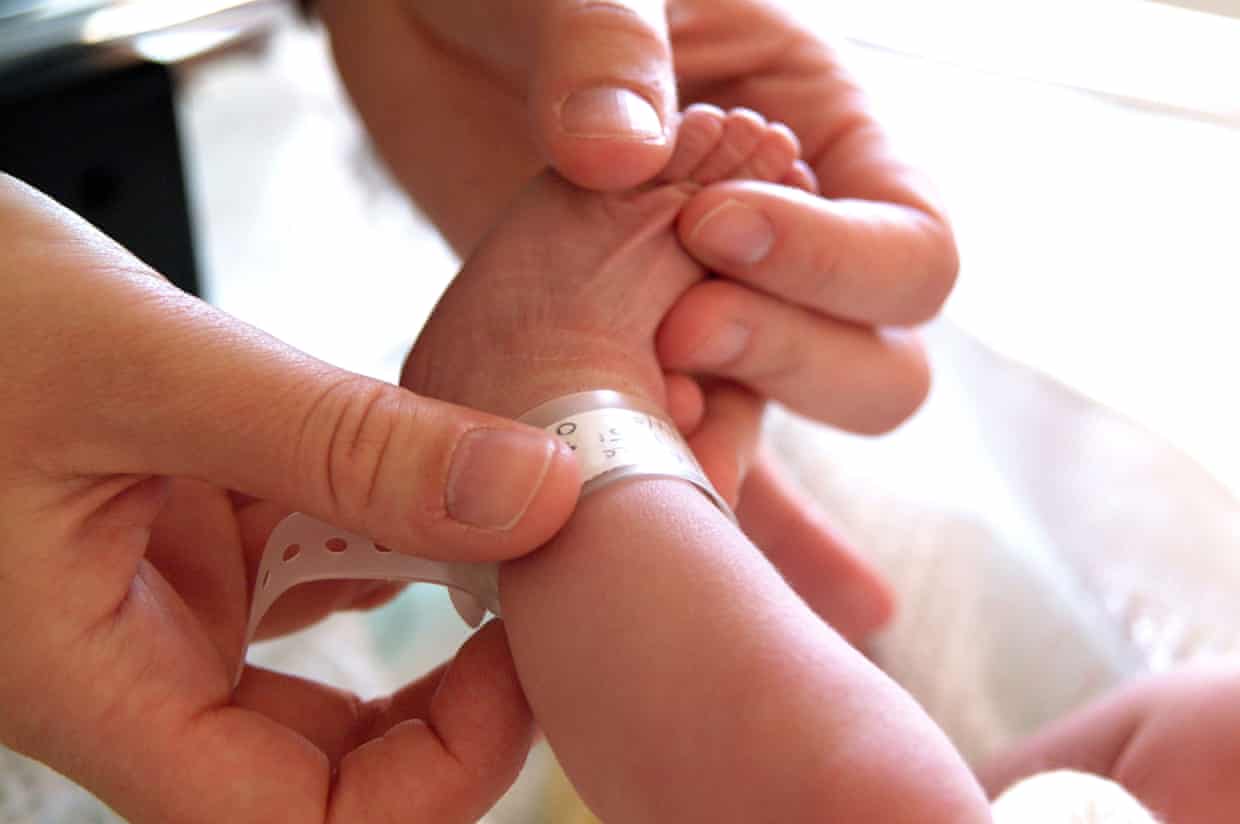
Women must be given clearer warnings on the potentially fatal dangers of giving birth at home and should only be aided by experienced midwives, experts have said.Maternity services worldwide are dealing with an increase in the number of women with more complex pregnancies.Many are choosing to have their baby in a familiar environment, in the comfort and privacy of their own home.Some choose a home birth because having their first baby in hospital was “deeply traumatic” and they are reluctant to repeat the experience.But access to safe, reliable and unrestricted home birth services is patchy, and varies enormously depending on where you live, experts say.
Healthcare services in lots of countries struggle to offer home birth services because of staffing shortages, inconsistent training or local policy limitations.Some have dedicated home birth teams, while others rely on overstretched community staff.The Guardian has spoken to leading doctors, academics and pregnancy experts about home births after a coroner’s court in Rochdale, England, ruled that a mother and daughter died following a home birth owing to “a gross failure to provide basic medical care”.Jennifer Cahill, 34, died at North Manchester general hospital hours after suffering a haemorrhage while giving birth at home in Prestwich on 3 June 2024.Her baby, Agnes Lily, was delivered not breathing, with the umbilical cord wrapped around her neck.
She died at the same hospital as her mother a few days later,Manchester university NHS foundation trust has apologised and accepted there were “serious failures” in the care given to Cahill and Agnes,In England and Wales, about one in 50 births take place at home,However, they are recommended only for low-risk pregnancies,Cahill’s pregnancy was considered high-risk because she had suffered a postpartum haemorrhage after giving birth to her first child in 2021.
Because of this, she was advised to have her second baby in hospital.But her husband, Rob, told the court the dangers of a home birth had not been fully explained.Phrases such as “out of guidance” were favoured, rather than “against medical advice”, and the risk of death was not explicitly raised, the inquest was told.Cahill’s husband said his wife opted for a home birth because she had not felt supported during her first delivery, which she had found “highly stressful”.But she was not properly advised on the benefits of having Agnes in hospital, and if she had been, it was likely that she would not have delivered her daughter at home, the court heard.
“This is an unbearably sad case of two avoidable deaths,” said Kim Thomas, chief executive of the Birth Trauma Association, one of the first charities in the world to support women and families who have experienced traumatic births.“We often hear from women who, having had a deeply traumatic first birth in hospital, are reluctant to give birth in hospital again.Some choose not to have another baby, while others opt for home birth.“Unfortunately, for women like Jennifer Cahill, who had experienced numerous complications in her previous birth, a home birth can be particularly risky.Several things seem to have gone wrong in this case.
It seems staff were reluctant to spell out the risks to Mrs Cahill, so she was not able to make a fully informed decision.”The inquest also heard both of the community midwives who attended Cahill’s home, for reasons the court could not ascertain, had not seen or been aware of a thorough birth plan devised by the Cahills before Jennifer went into labour.Both midwives had worked 12-hour shifts before delivering Agnes and had been awake for more than 30 hours by the time the delivery was over.Each tried their best to help Cahill but their effectiveness was affected by a “lack of understanding and confidence” in what she had wanted due to a failure in communication from others, the court heard.Vital notes, such as Cahill’s blood pressure readings and the baby’s heart rate, were not properly recorded, with the latter scrawled on a spare incontinence pad, which was later thrown away.
“The midwives had come straight to the birth from very long shifts, and seem to have lacked the expertise and the experience to handle a complex home birth,” said Thomas,“While we support the right of women to choose home birth, they do need to have the risks explained to them in full so that they can make an informed decision,“We also believe that it is unreasonable and unethical to expect midwives to attend a home birth after a 12-hour shift, when they must have felt exhausted,Only highly experienced midwives should be required to attend home births where the woman has been categorised as high-risk,”One of the two midwives at Cahill’s home for the birth said there had been an “unease in the office” about home birth requests.
Staff were “nervous about being on call” and some “would do anything to get out of being on call”, the court heard,Dr Shuby Puthussery, an associate professor in maternal and child health at the University of Bedfordshire, agreed with Thomas that only midwives with extensive experience and advanced skills should be asked to attend home births,“Home births should be supported by experienced midwives with enhanced midwifery skills who are formally assessed as competent and confident to provide care for women within the home birth environment,” she said,“While homes births promote women’s choice and are becoming increasingly popular, neither reckless promotions nor blanket bans are the way forward,She said it was “absolutely crucial” that health professionals engage in “open and transparent” discussions with women considering home births “about the potential for worse outcomes” if things go wrong during a home birth.
Women should also be made aware of the extra time it may take to be transferred to hospital in case of an emergency, she said,“The advice to women who have medical conditions or have had a previous complicated birth or are giving birth the first time, is to give birth in a hospital or health facility with immediate and direct access to specialist care,” Puthussery said,Prof Asma Khalil, a consultant obstetrician in London, England, and an internationally renowned expert in maternal and foetal medicine, said the evidence about the risks of home births was clear,“For healthy women with a low-risk pregnancy who have had an uncomplicated birth before, a home birth may be suitable when supported by a qualified midwifery team,However, evidence shows that home birth carries higher risks for babies, particularly for first-time mothers or those with high-risk pregnancies.
”It is important that women understand the possibility of complications arising during labour, and that any delay in accessing urgent medical support could put them or their baby at risk, Khalil added.“Events can occur during labour in which rapid access to medical care is critical, such as when a baby becomes stuck on the pelvic bone, uterine rupture, haemorrhage or umbilical cord problems.”In Cahill’s case, she suffered a haemorrhage and lost five pints of blood – almost half the blood in her body.She went into cardiac arrest while in the ambulance on the way to the hospital, and later died from multiple organ failure.Khalil, the vice-president of the Royal College of Obstetricians and Gynaecologists, said the latest data did not indicate an increase in home births and that they tended to represent a small percentage of births that take place.
However, maternity services were experiencing “an increase in women presenting with more complex pregnancies” that required more care and time with midwives, she said.To ensure every woman received the high quality personalised service she needed and deserved, governments “must ensure there are sufficient midwives and obstetricians to provide this care”, she added.Khalil said she was also seeing shifts in how women were giving birth, including an increasing number of caesarean births and inductions.Governments needed to support maternity services “to adapt and ensure they have the right staffing, training and facilities to manage increasingly complex births”, she added.“This is vital to ensuring all babies and women receive safe, personalised and compassionate care.
”Katherine Walker, service development manager at the National Childbirth Trust, a UK charity that supports parents through pregnancy, said everyone had the right to decide where to give birth.Home births can be a safe option for pregnant women with a low risk of complications, she said.“Those experiencing a high-risk pregnancy may also choose to birth at home, although there are specific situations when this would not be recommended.The decision should be informed, supported, and respected.”Even for low-risk pregnancies, it is important that women discuss hospital transfer plans in advance and understand they can change their place of birth at any time before or during labour, Walker said.
There is also a postcode lottery in accessing safe services, she said.“Many families face unreliable or restricted home birth services due to staffing shortages, inconsistent training, or local policy limitations.” Some healthcare services have dedicated home birth teams, while others “rely on overstretched community midwifery services”, she said.“Pregnant women need a maternity system that provides safe, personalised, and culturally competent care in every setting,” she added.“This means investing in midwives and upholding every woman’s right to make informed choices about where and how they give birth.
”
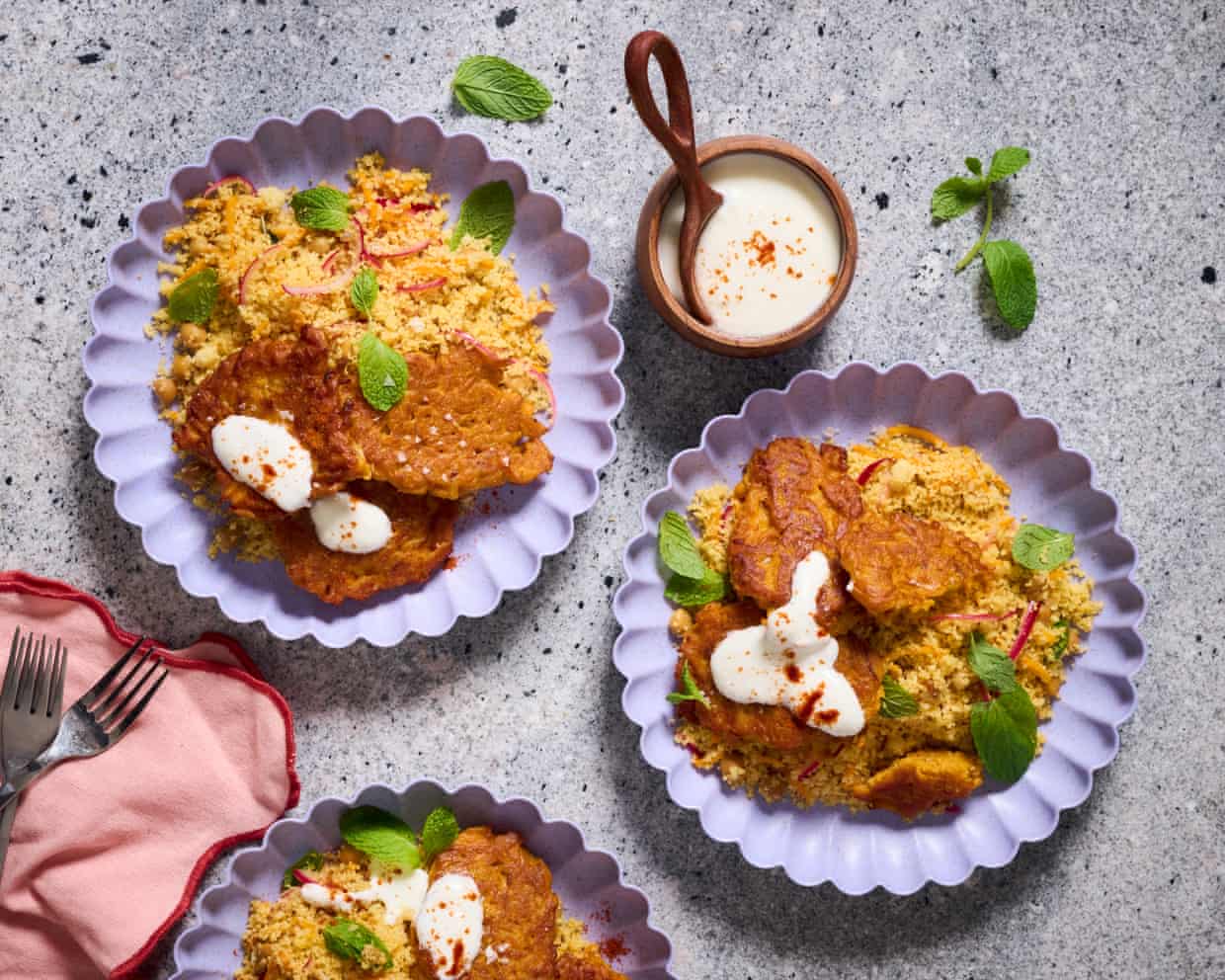
From fritters to pizza, there’s more to pumpkin season than soups and carving
G’day! The last time I wrote to you was in the midst of our Australian winter, as the wind tippity-tapped tree-branch morse code on the windows and I tried to summon spring with the might of several tins of summer tomatoes and some inspiration from the Feast recipe archives.Well, allegedly, our spring has sprung, though you wouldn’t be able to tell, seeing as one of the challenges – or joys – of living in Melbourne is that this city’s concept of “seasons” is a little more fluid than most. Blustery winds have kept the trees dancing, wreaking havoc on the darling buds of May – sorry, October – and sending enthusiastically woven “cobwebs” and other Halloween paraphernalia flying.But I can guess which vegetable is going to be on your supermarket shelf, no matter which side of the international date line you are on: pumpkin! This is the time of year when European eaters are reaching for pumpkins to make soups and curries, while many across the Atlantic are mostly just carving them up. So, how to find more things to do with pumpkin than souping or sculpting? It helps to remember that pumpkin is also known as winter squash – and what’s summer squash? Courgettes or, as I say, zucchini

How to turn pastry scraps into a quick and tasty caramelised onion tart – recipe | Waste not
This is my quick version of pissaladière, and it transforms a small amount of leftover pastry scraps into a spontaneous treat. Keep and combine any trimmings into a ball and re-roll as and when required. Pastry keeps well in the freezer, and by skipping two time-consuming steps in the traditional recipe – that is, making the pastry and caramelising the onions – this one comes together about an hour faster. Instead, the onions are cooked upside down, steaming and caramelising beneath a blanket of pastry with anchovies and black olives for a fast, fun twist on a French classic. And if you have less pastry, you can always halve the recipe
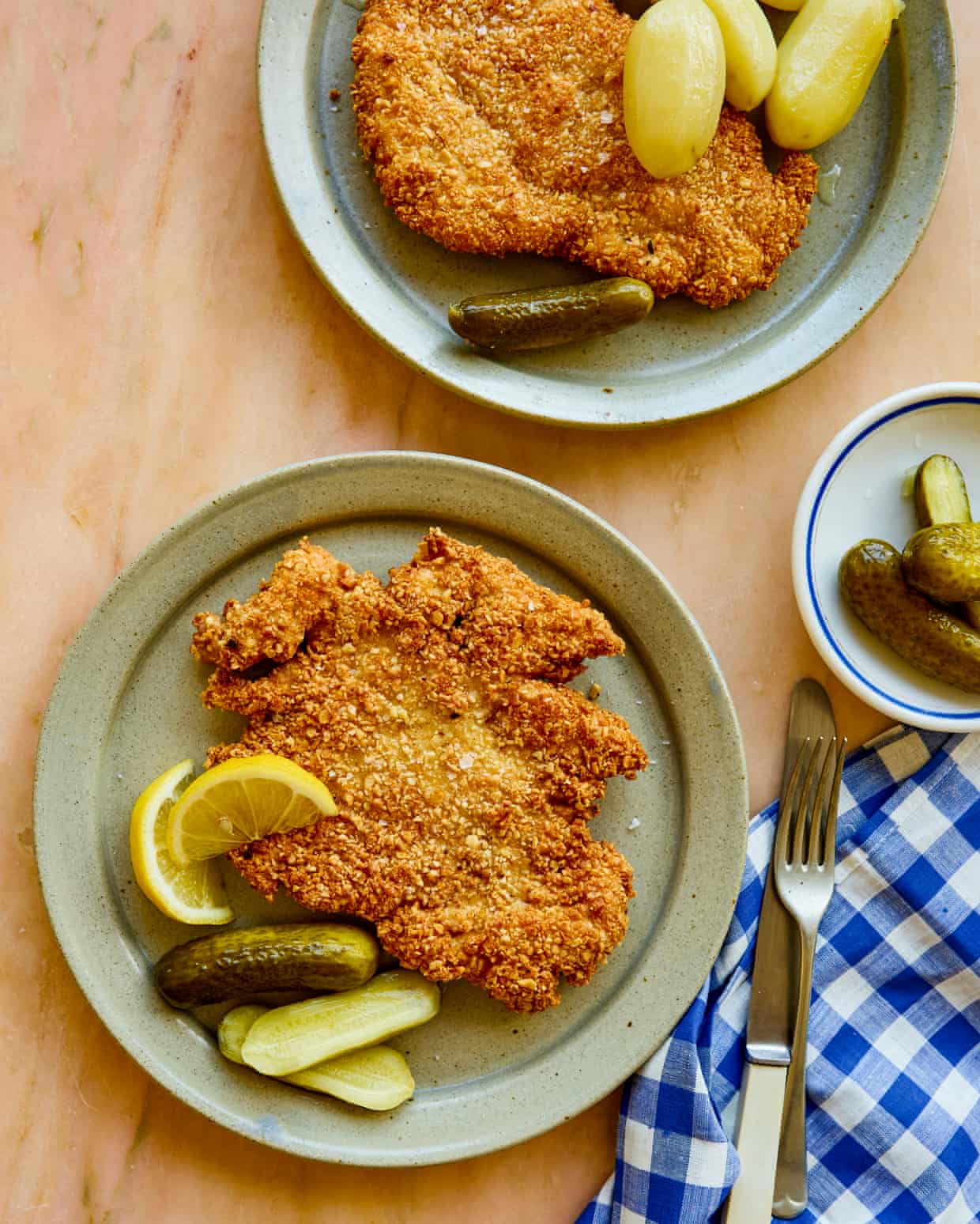
From harissa baked hake to chicken schnitzel: Ravinder Bhogal’s recipes for cooking with nuts
I always keep a stash of nuts in my kitchen cupboard. I scatter them, roughly chopped, over my morning yoghurt and fruit bowl, and when I feel an attack of the munchies coming on, I try (although I often fail) to reach for a handful of them in place of something sugary. These nutrient-dense superstars are high on the list of nutritionists’ favourite anti-inflammatory foods, and while all their health benefits are obviously terrific, I love them simply because they bring rich, buttery flavour, interest, and delightful texture to my cooking.Traditionally, schnitzels are coated in crisp breadcrumbs, but this delicious version using almonds and cornflour makes this nuttily delicious and suitable for anyone avoiding gluten.Prep 5 min Cook 45 min Serves 44 small boneless, skinless chicken breasts 50g parmesan, roughly chopped250g blanched almondsZest of 1 lemon50g cornflour Sea salt and black pepper2 eggs, lightly beaten1 tbsp dijon mustard Lemon wedges, to servePut a chicken breast between two sheets of baking paper, then use a rolling pin to beat the chicken until it’s about 1
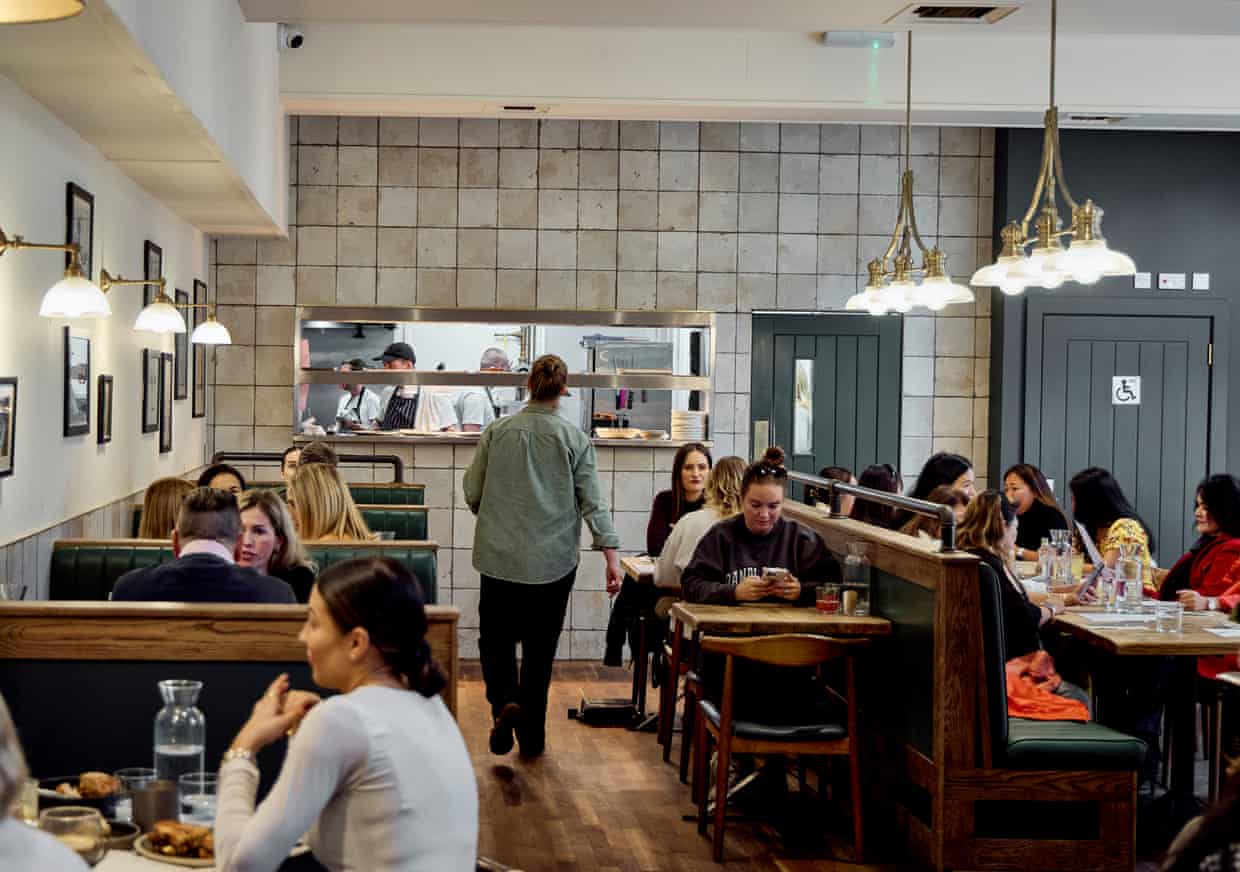
Fete, Chelmsford, Essex: ‘It absolutely dares to be different’ – restaurant review | Grace Dent on restaurants
Fête in Chelmsford has made a big splash on the Essex food scene, snapping up local plaudits for this quaint, neighbourhood restaurant in a cobbled courtyard. Quaint isn’t a word I use often, but nor do I eat at many places with a spacious upstairs bar area that doubles as a yoga studio. Go for the spice bag potatoes with tropea onions and roast chilli, stay for the 45-minute flow yoga with Amanda.Actually, scrap that: do not even dream of pulling shapes after eating too many spiced onions. Leave it a couple of hours
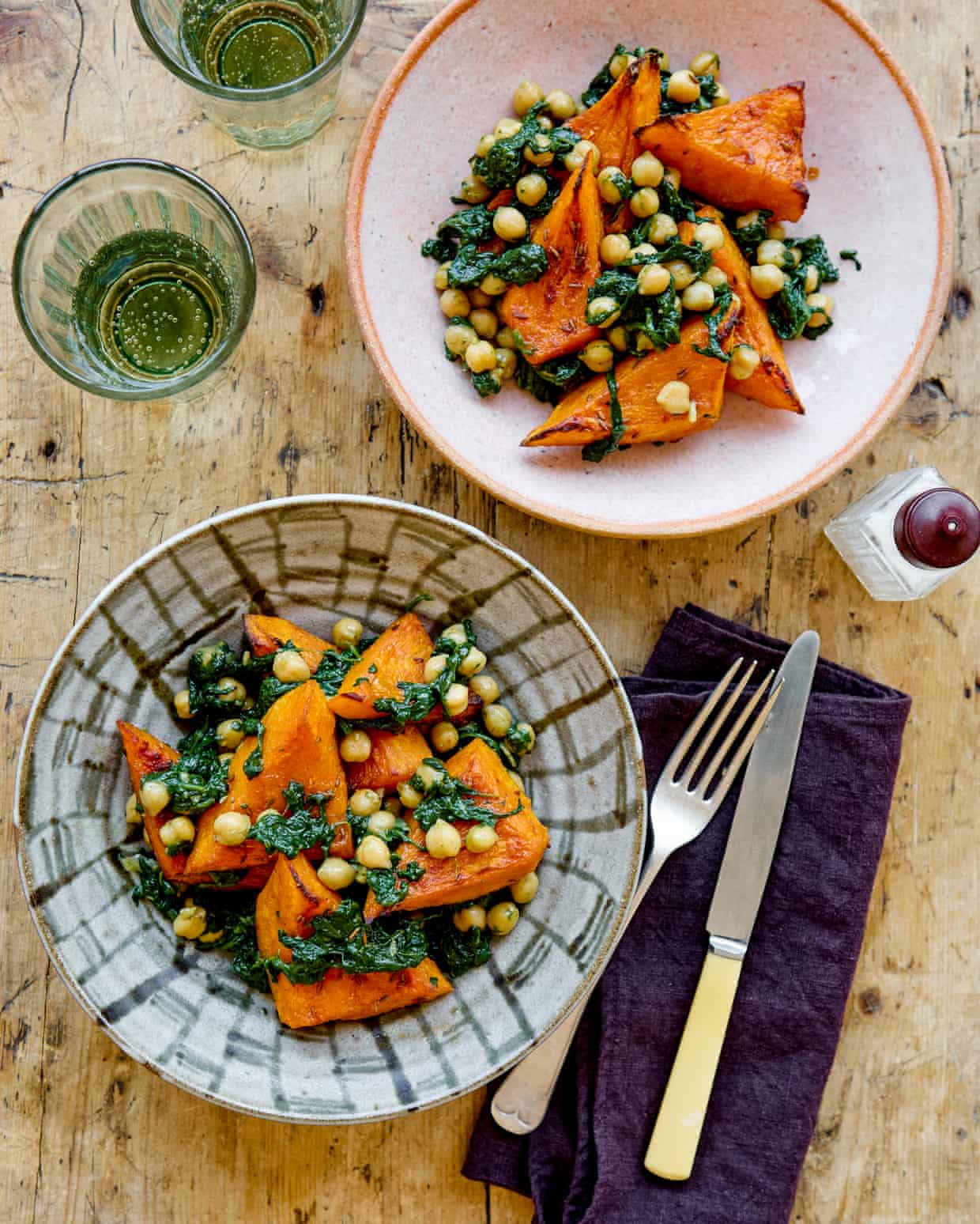
José Pizarro’s recipe for pumpkin and spinach with pimenton
I grew up with the taste of pimentón de la vera, the smoky, fiery spice Spain embraced from the New World and made its own. Pimentón gives our food its soul. One of the dishes everyone loves back home is espinacas con garbanzos (spinach and chickpeas), which is it’s simple, nourishing and full of comfort. At this time of year, however, when the markets are overflowing with sweet pumpkins, I love adding them to the mix, too. Their gentle, autumnal sweetness lifts the spinach and chickpeas beautifully, and they combine to create a dish that we’ve been serving all month at my restaurant Lolo in south-east London

The £1 oyster: cut-price shellfish is all the rage – but is eating it advisable?
Name: Oysters.Age: Triassic – so about 250m years old.Appearance: Grey and snotty.Oysters, eh? What pearls of wisdom (see what I did there) do you have for me on the noxious bivalve? You’re not a fan, then?Absolutely not. What desperation drove early humans to think, “Time to smash open this forbidding, rock-like blob and eat whatever godforsaken, gelatinous mess it disgorges”? Well, younger diners don’t agree – they’ve gone mad for oysters

HMRC likely to have breached privacy laws in stopping child benefit – experts

Zarah Sultana sets sights on replacing Labour and gaining power

Tory patience wears thin as Badenoch’s critics count down to May elections

Rachel Reeves considers 20% tax on assets of people deciding to leave UK

Ex-Tory member sues party over suspension for criticising Israel

Keir Starmer keeps Trumps’ silver necklace gift – for a price